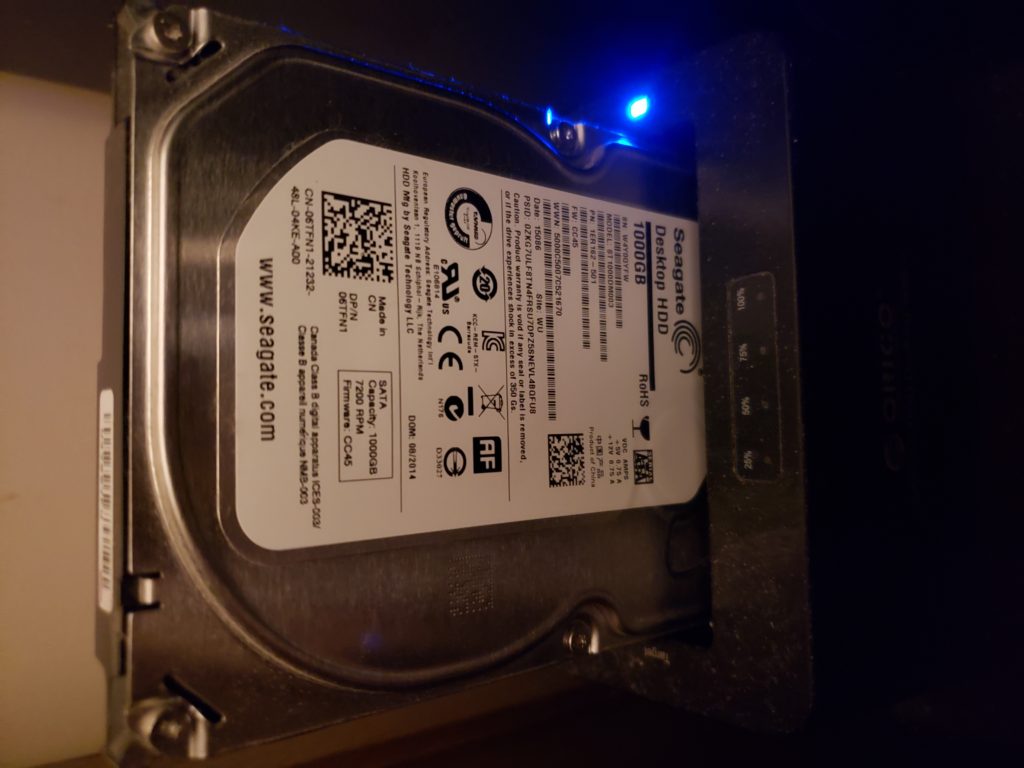
Data Recovery Services and Data Back-Up
If you’ve just had a catastrophic computer disaster and your screen is blank or your computer is black and won’t turn on or your hard drive is making clicking sounds, then have no fear because we can recover your data. We know that the most important things you need to recover are essential business files and treasured family photographs. We’re here to help get you back in business and reclaim your precious data from a potentially catastrophic loss. Give us a call at (502) 963-3981 to discuss your options today. There are different kinds of data recovery depending on your situation and we can help you with all of them:
Disk Drive Data Recovery Levels
Data Recovery Level 1 is a type of file transfer or file restoration. In this situation you just need to have your files recovered and your hard drive is not damaged in any way.
Data Recovery Level 2 occurs when your hard drive is not physically damaged but you can’t access your files. Formatted hard drives, deleted files, corrupt or damaged disk partitions due to viruses, tampering, corruption, etc. can all cause this level of data recovery to be necessary.
Data Recovery Level 3 is needed when your hard drive is not recognizable by a computer because of physical damage to the drive and must be taken apart and repaired piece by piece. This can be caused by age, malfunction or impact.
Data Recovery Topic: What is Data Recovery – Is It Too Late To Save My Data?
Data recovery can be considered the process of recovering data from secondary storage media that has failed in some way. The data or the media could be damaged, corrupted, or inaccessible due to a drive failure. It could also be caused by an operating system failure. Understanding the cause of the problem is necessary to find the right solution. Like many other challenges in life, the proper preparation can make dealing with data recovery issues quick and easy.
The most common scenario is caused by a failure of the operating system. In this case, the best option is usually to attempt to copy the remaining files to another disk. There are a variety of ways to accomplish this by mounting the failed system drive to another computer system.
In the case of a disk-level failure, the data can be challenging to read. This type of failure is commonly caused by hard drive failure or a compromised file system. This is potentially a complex issue to solve. It may be necessary to repair the file system or the master boot record. Both hardware and software recovery method might be necessary, depending on the specific problem.
Another scenario is the recovery of deleted files. When files are first deleted, they are not actually removed. What is lost is the reference to the file and the location. Over time, this area of the storage medium is used to store other files, and the original file is eventually lost. It is actually “written over.” At that point the data becomes unrecoverable. Until this has occurred, the original file is still intact; although, sometimes the file can be spread over several storage locations.
Prevention is the Best Medicine – Data Integrity and Data Back-up
With the proper preparation, data recovery is a relatively simple process. Too many people fail to take the proper steps to protect their data.
Making use of regular backups is the best way to ensure that your valuable files can be recovered, regardless of the type of failure. Find a back-up frequency that makes sense for your unique situation. External hard drives are the most common tool for this purpose
Check that your backup is working. Once a month, access a few of the files from your backup system and ensure that you can transfer them to your primary computer system. All hard drives fail eventually. Make sure your external hard drive is functioning properly by testing it each month.
